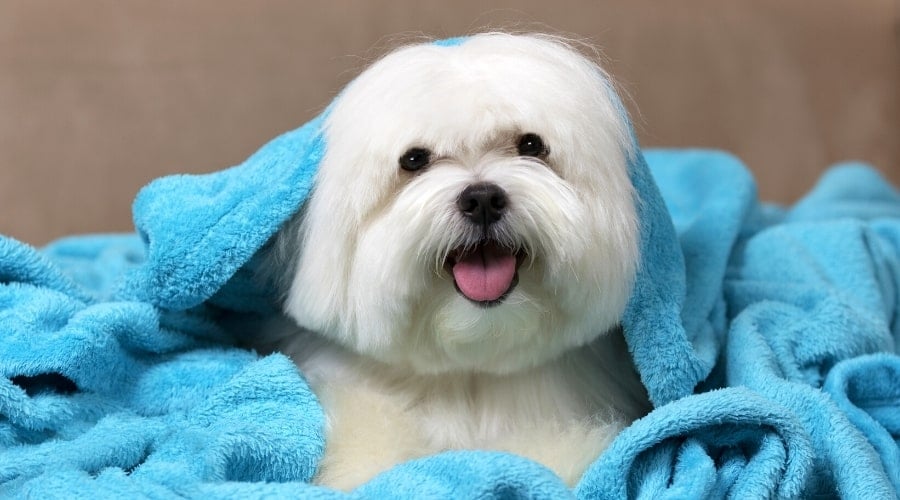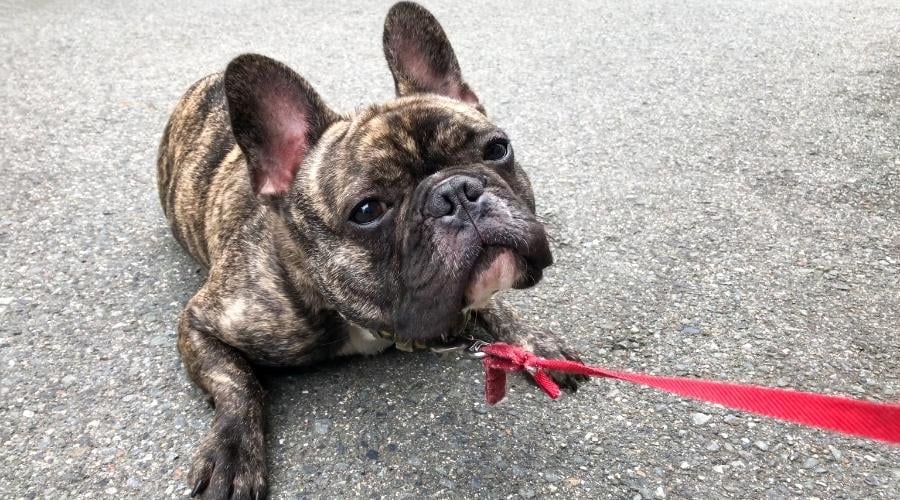Intelligence Unleashed: 12 Dog Breeds That Are Smart and Easy to Train
When you purchase through links on our site, we may earn a commission. Here’s how it works.
Choosing the right dog isn’t just about size, cuteness, or how much fur ends up on your couch. It’s about that special connection, when your pup locks eyes with you and everything just clicks. For many dog owners, that bond deepens through training when your dog learns to listen, respond, and grow alongside you. So, what are the easiest breeds to train?
Table of Contents
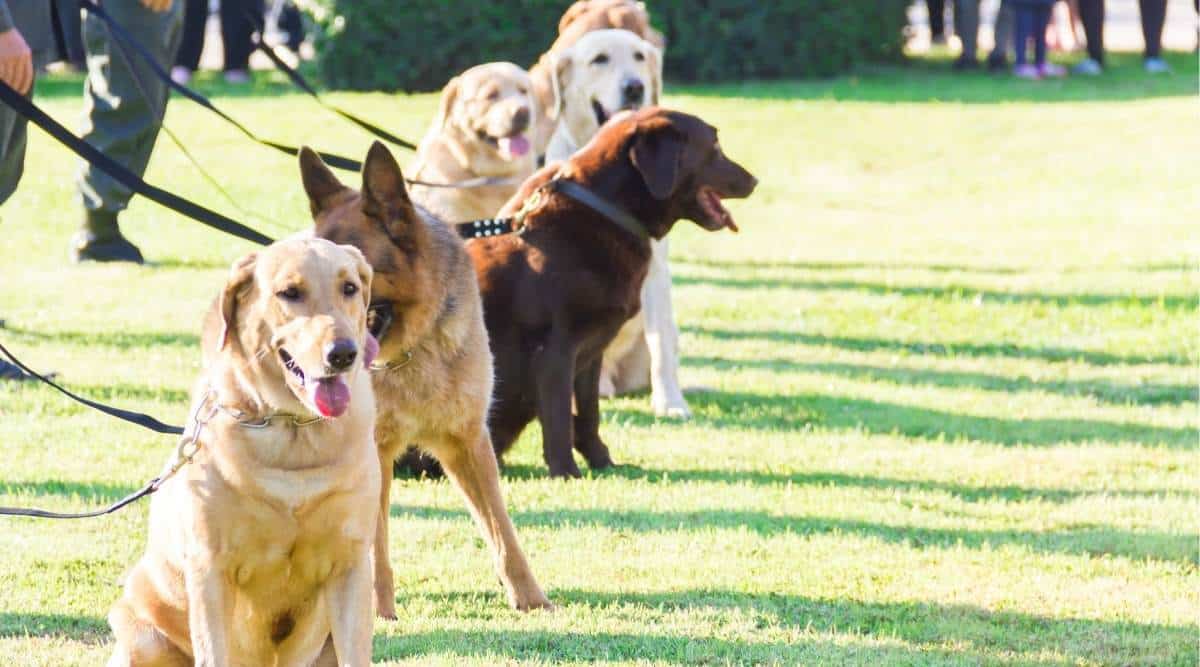
For some breeds, it just comes naturally. They’re not only sharp, they’re eager to please, ready to learn, and genuinely enjoy being your partner in everything from sit-stay basics to full-blown adventure mode. Meet 12 breeds that don’t just come with brains but with big hearts and a built-in desire to make you proud.
Why Trainability Matters When Choosing a Dog
Before falling head over heels for a dog’s floppy ears or wagging tail, it’s worth thinking about what life with that dog will actually feel like day to day. No matter how big or small, every pup plays a unique role in the family. Maybe you dream of a loyal sidekick for weekend hikes, a playful pal for your kids, or a dog who can help you with farm work. Or maybe you’re just hoping for a buddy who doesn’t turn the couch into a chew toy.
Some experienced owners enjoy the challenge of a more independent or sensitive breed, but most people hope for a smoother ride. While there’s no such thing as a “perfect” dog (just like there’s no perfect human), choosing a breed naturally inclined to listen and learn can make the journey much more joyful for both of you.
When discussing how easy a dog is to train, we often focus on intelligence, but that’s only part of the picture. A dog might be clever enough to learn new commands quickly, but still ignore them if it doesn’t feel like cooperating. Biddability makes a dog a training dream—a cheerful willingness to follow your lead. That trait often differentiates between frustration and fun during training sessions.
No matter what kind of dog you have, some training is non-negotiable. Potty training, leash manners, and basic obedience aren’t just about convenience; they’re about safety and harmony at home. A dog who listens well is easier to live with and more likely to thrive alongside you wherever life takes you.
Smart, Trainable, and Totally Loyal: 12 of the Easiest Breeds to Train
If you’ve ever thought your dog might secretly be plotting to open the treat jar or unlock the back gate, you might have a genius on your hands. Some dog breeds are famous for their sharp minds and quick learning skills. These brainy pups thrive on mental stimulation and love having a job to do, whether it’s herding sheep, mastering tricks, or outsmarting their humans (in the most lovable way possible, of course).
The easiest breeds to train for most households have a blend of intelligence and eagerness to please. The American Kennel Club suggests that breeds from the Sporting Group, Herding Group, and the Working Group tend to be more trainable because people created the breeds to work alongside their handlers. At the same time, the hounds and terriers may present more of a challenge. The following breeds rank highly for trainability.
Labrador Retriever: The Lovable People-Pleaser
Labs are more likely to be the same dog around family as they are around strangers. Labrador Retrievers’ eagerness to please their human partner makes them one of the most easily trained breeds. Whether he is a hunting partner, family pet, or service dog, the breed has a long history of working side by side with people. Labs are biddable dogs. They are praise motivated, and while they may not learn as quickly as some other breeds, they learn happily and willingly.
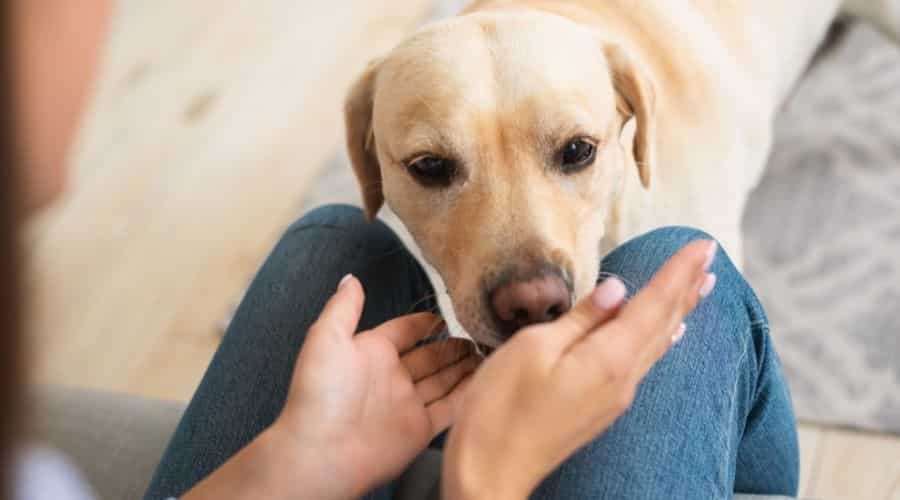
Their intelligence, pleasant nature, and desire to please make them excel in fields as diverse as a hunting companion, guide dogs, search-and-rescue work, therapy work, and narcotics detection. Labs tend to like everyone, so their training holds in different situations.
- Why it works: Labs are social learners. They thrive in homes with consistent routines and plenty of interaction. They’re food-motivated, playful, and sharp enough to catch on to training fast.
- Watch out: Their energy needs an outlet, or your sofa will suffer.
Golden Retriever: The Gold Standard in Family Dogs
Goldens are naturally friendly and bond quickly with people. Like the Labrador Retriever, the Golden Retriever lives to please its owner. Their retriever instinct makes them naturally biddable dogs. They look to their owner for direction. This makes them one of the easiest breeds to train.
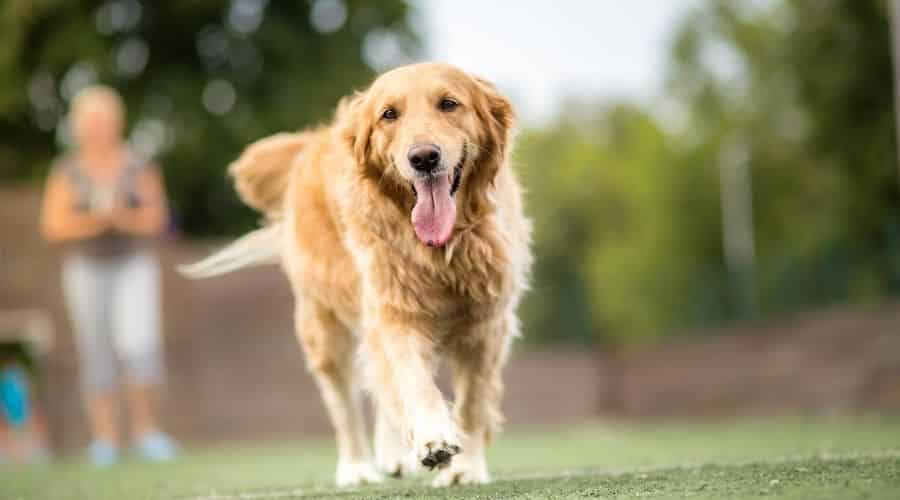
Inherently obedient, the Goldens’ devotion to their family is part of what makes them so trainable, and their intelligence and ability to learn commands are the other. They’re unlikely to be distracted by jumping into protective mode, which is one less distraction from their training.
- Training Superpower: Patience. Goldens stay calm even during mistakes, which is ideal for first-time trainers.
- Use case: Therapy work, service animals, or just being your well-behaved shadow.
German Shepherd: The Loyal Protector with a Sharp Mind
There’s a reason you see German Shepherds in police work, the military, and search-and-rescue. They’re alert, obedient, and incredibly adaptable. The German Shepherd’s legendary protective characteristics keep them attuned to their person’s needs. German Shepherds go to great lengths to please their owners. Their intelligence, loyalty, and obedience make them very trainable.

Trainers initially developed Schutzhund, a sport and training method, for GSDs. This sport tests tracking, obedience, and protection skills. Although many breeds work well for Schutzhund, the German Shepherd excels. Intelligent and trainable, he is highly biddable and eager to work with his handler. His balanced temperament and his willingness to forgive handler mistakes are a bonus.
- What sets them apart: High emotional intelligence. They pick up on your tone, posture, and mood.
- Pro Tip: Establish leadership early. They respect structure.
Poodle: The Stylish Genius (Yes, Really!)
Underneath the pom-pom fur is a razor-sharp mind. Poodles love learning for their own sake, and the breed’s history as trick dogs reflects this. Well known as one of the most intelligent and trainable breeds, Poodles have a trainability that depends less on instinct to perform a job and more on their ability to learn.

Poodles may not be as eager-to-please as the Lab and the Golden, but their water dog past means they are very much in tune with their person’s wishes. The popularity of circus “trick dog” shows was one of the driving forces behind breeding smaller versions of the Poodle because the clever, highly trainable dogs were perfect entertainers.
- Why it matters: Their intelligence pairs with an eagerness to please. That’s a trainer’s dream.
- Bonus: Hypoallergenic coat = less sneezing while you high-five their success.
Pembroke Welsh Corgi: The Big Brain in a Small, Sassy Body
Corgis are friendly, upbeat, and adaptive. Corgis are herding dogs, which means they are more independent than the retriever group. While highly trainable due to their intelligence, Corgis are less biddable than Retrievers because they think for themselves, as a good herding dog should.
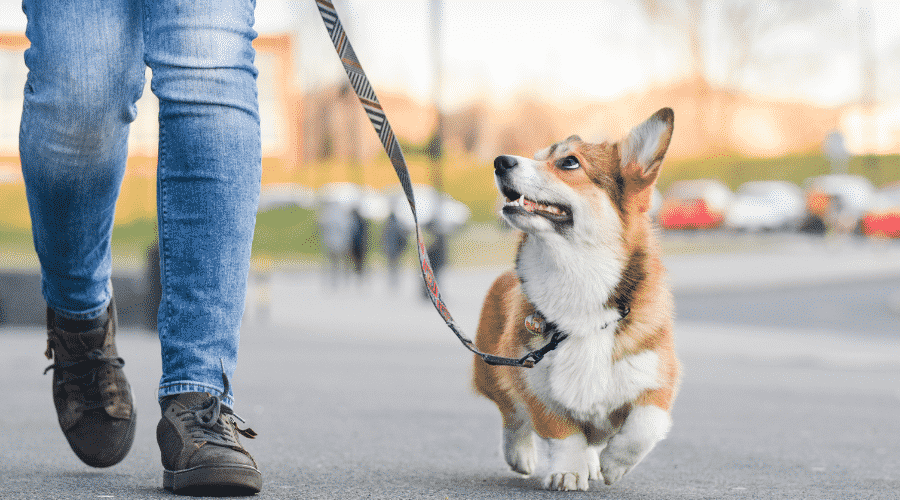
Although Corgis learn desirable behaviors quickly, they just as quickly learn how to circumvent authority. Corgis are independent thinkers; even if they quickly grasp what you want them to do, there’s no guarantee they’ll do it. They pair best with an experienced owner who understands the breed.
- What they need: Mental stimulation and consistency. Otherwise, they’ll run the household.
- Watch for: The dramatic side-eye when they don’t get their way.
Australian Cattle Dog: The Tireless Thinker Who Loves a Challenge
These dogs are workaholics in the best way. With intense focus and drive, they crush obedience challenges and demand engagement. ACDs were bred to nip at the heels of animals weighing over a thousand pounds without backing down.
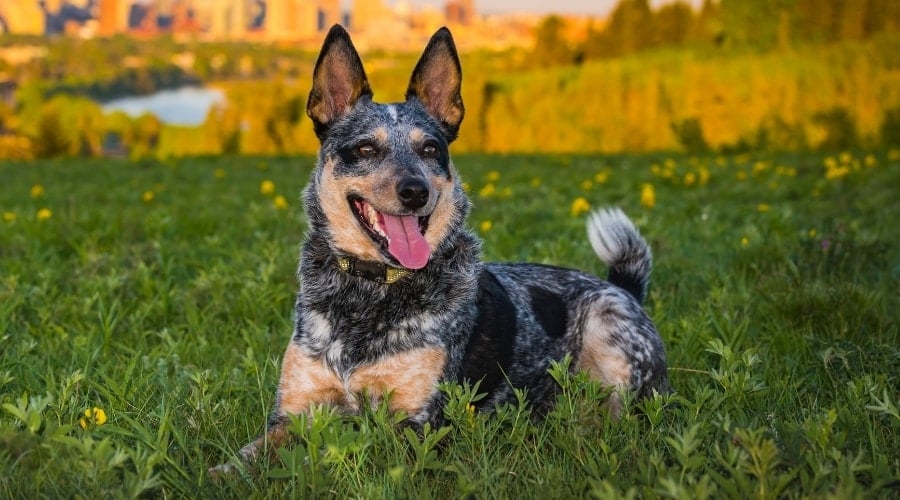
Another member of the herding group, the Australian Cattle Dog, is also an independent thinker, as cattle dogs tend to be. Heelers’ drive to herd is so strong it may supersede his training not to nip at heels.
Task-oriented training can help give them an outlet for their energy, but the ability to make quick decisions on their own, as they must when working a herd, can make them a challenge for a trainer unfamiliar with heeling dogs. Their owners should be consistent, strong, and positive trainers. They respond best to positive reinforcements like clickers and food rewards.
- Fun Fact: One of the oldest dogs on record, Bluey, was an Australian Cattle Dog who lived to be 29.
- Warning: They don’t chill unless you teach them to.
English Springer Spaniel: The Eager Learner with a Heart of Gold
Springers combine eagerness with sensitivity. They’re excellent at reading body language and adapt well to positive reinforcement. The Springer flushes small game one minute, sits back so the hunter might take a shot, and then has to retrieve.

Many say that Labradors are easier to train than English Springer Spaniels. There might be some truth in this, but the reality is that a Springer Spaniel does more than only retrieve in the field, so one can expect they’ll require more extensive training. Training takes longer and requires an experienced handler, but once a Springer Spaniel learns his job, he’s got it for life.
- Perfect for: Families who want a polite, fast learner with a playful streak.
- Training trick: Keep lessons fun. They love praise more than treats.
Papillon: The Tiny Dog with a Huge Brain
This little butterfly-eared breed is one of the most surprising entries on the list. Papillons excel at agility, tricks, and obedience. Papillons are not as challenging to housebreak as many toy breeds, but because they learn tricks so quickly. The tiny Papillon, named for the French word for butterfly, is eager to please and intelligent.
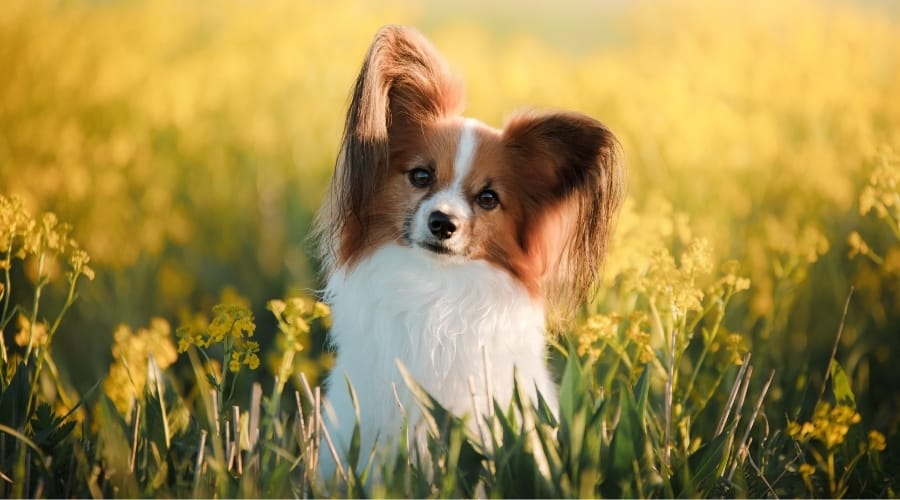
These pups learn tricks quickly and will delight the owner who wants such an interactive, entertaining companion. Their owner must show patience when potty training them as puppies because they typically take longer than a large breed dog. Indoor accidents may surprise an owner unfamiliar with them.
- Why it works: They’re alert, curious, and fearless—basically, little canine scholars in a feathered coat.
- Ideal owner: Someone who wants a pocket-sized powerhouse.
Shetland Sheepdog: The Graceful Overachiever of the Herding World
Don’t let the cuteness fool you. Shelties are clever, responsive, and often outthink their owners. They’re sensitive, too, so a harsh tone shuts them down fast. Shelties make good, easy-to-train dogs for a number of reasons.
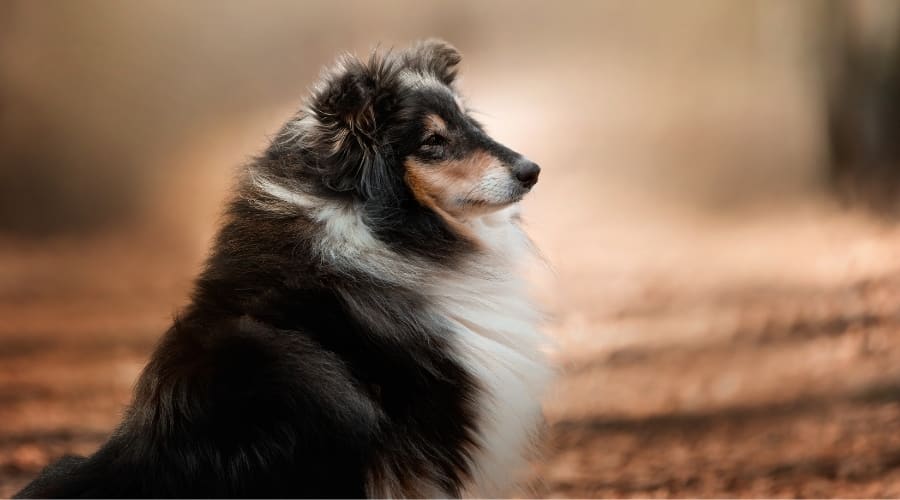
Shetland Sheepdogs’ sensitivity makes them exceptionally attentive and responsive. For the right individual, they can be easy to train. Shelties’ quick reflexes can be mistaken for over-reactivity when they are simply ill-suited to a loud, overly stimulating environment.
They thrive with a trainer who uses a calm voice and a light hand during training. Verbal corrections may be sufficient. Praise and positive reinforcement maximize their trainability.
- Training style: Gentle, positive reinforcement. They’re perfectionists, not rebels.
- Fun Fact: Shelties were once used as farm dog alarm systems—they’d bark to warn of intruders long before motion sensors were a thing.
Doberman Pinscher: The Brilliant Bodyguard Who Aims to Please
Dobermans aren’t just tough, they’re intelligent and highly trainable with the proper guidance. They’re deeply bonded to their humans and respond well to clear, confident leadership. The Doberman Pinscher is often shortened to the nickname “Dobie.” Doberman Pinschers are renowned for being brave watchdogs, but they’re also intelligent and highly trainable as long as you start the process early on.
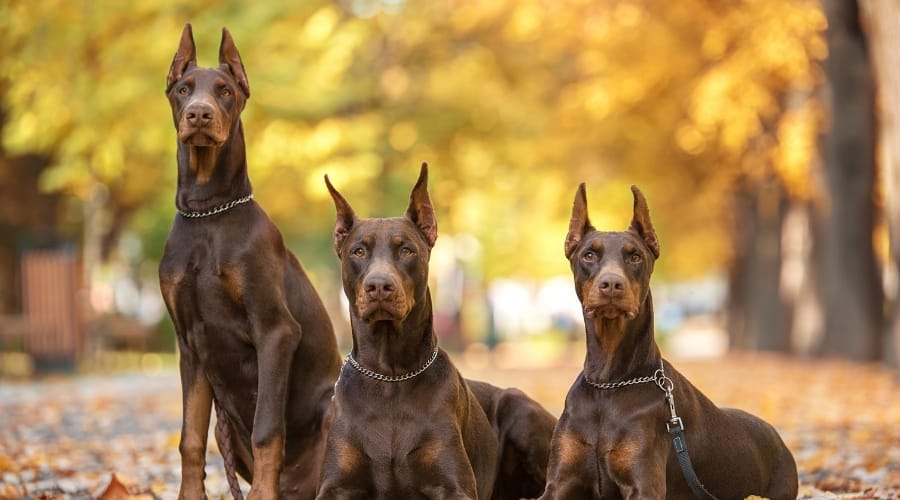
Their size and strength make early socialization a must. Dobies learn easily and respond quickly, but they are powerful dogs and can become difficult to manage if not raised properly.
- Why they’re easy to train: High drive + emotional loyalty = built-in motivation.
- Heads-up: They will test your consistency. Be ready.
Border Collie: The Einstein of the Dog World
If dogs had IQ tests, the Border Collie would write the questions. Border Collies are incredibly clever and highly biddable. They are the most widely used herding dogs in many countries. Their AKC breed description goes so far as suggesting they have the “uncanny ability to reason.”
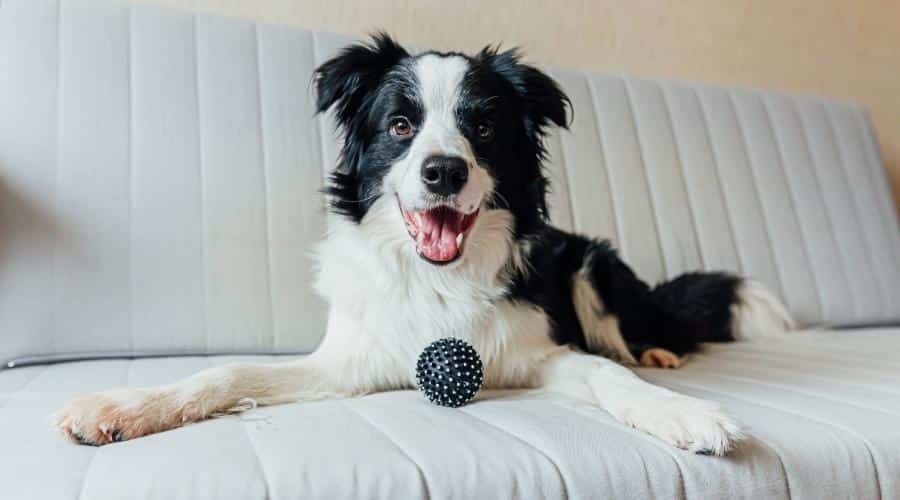
This same ability to make a decision based on multiple factors makes the Border Collie able to decide to move the herd when out of range of the shepherd. This independent streak is necessary for a good herding dog, but may frustrate his owner if he ignores his commands.
- What makes them so smart? Herding instincts. That laser focus? That’s not your imagination.
- Training Tip: Keep sessions mentally stimulating—boredom leads to chaos.
Miniature Schnauzer: The Spirited Smarty with a Beard
Equal parts clever and sassy, the Miniature Schnauzer has a knack for reading the room and your face. They’re quick to pick up commands and even quicker to try and bend them.
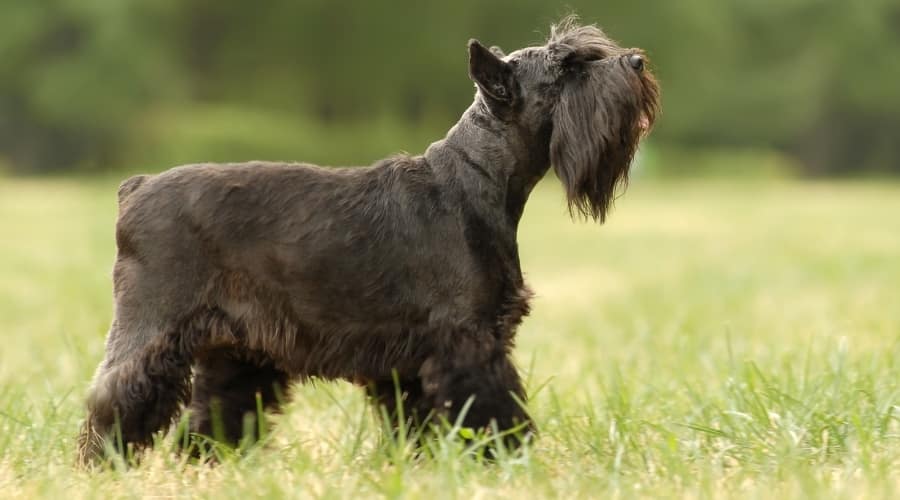
The Miniature Schnauzer‘s outgoing personality makes it popular with children. Their trainability makes them great family pets. “This breed figures things out quickly, but they don’t like to repeat what they already know,” says John Constantine-Amodei, a longtime Miniature Schnauzer breeder who is the judges’ education chair for the American Miniature Schnauzer Club. “That’s why it’s best to train in short, five to ten-minute sessions.”
- Training tip: Keep it interesting. If they’re bored, they will entertain themselves.
- Good news: That beard is all bark, no bite.
Keep In Mind
Although we attempt to categorize dogs neatly as easy or hard to train, the reality is more complex. The dogs we have mentioned are some of the easiest breeds to train, but there is more to it than that. Biddability can be at least as crucial as overall trainability for most dog owners. Just because a dog learns tricks easily doesn’t mean he’ll be the quickest pup to avoid accidents in the house. The breed that crates and house trains most easily may not learn how to walk nicely on a leash as fast.
Training Tips for a Well-Mannered Pup
Good training takes patience, consistency, and heart, no matter how smart or eager your dog may be. The goal isn’t just to teach your dog what to do. It’s to build trust and communication between you. That starts with setting your dog up for success in every session.
Keep training sessions short and upbeat, especially for puppies or easily distracted breeds. Aim for just 5 to 10 minutes at a time, and end on a positive note. Use rewards your dog actually cares about, whether it’s a tasty treat, a favorite toy, or simple praise. And remember, dogs respond best to clear cues and positive reinforcement. Instead of punishing mistakes, redirect gently and reward the right behavior.
6 Smart Training Tips That Make a Difference
- Start with the basics – Every dog should know the basic commands: sit, stay, come, and leave it. These skills create a base for good behavior at home and in public.
- Be consistent with commands – Use the same word or phrase every time for each command. Changing your wording can confuse your dog and slow down learning.
- Use high-value rewards – Find what your dog truly loves, whether that’s a soft treat, squeaky toy, or affection, and use it to motivate them during training.
- Keep sessions short and positive – Dogs learn best in brief bursts. Ending on a success keeps your dog excited and ready for the next session.
- Practice in different environments – Once your dog masters a command at home, try it in the yard, at the park, or around distractions to strengthen reliability.
- Train a little every day – Even five minutes of focused training daily can make a big difference. It keeps skills sharp and reinforces good habits.
If you need help, consult a professional trainer. You can try in person, online, or even training apps that can offer guidance to give you and your dog the best experience and outcome.
Check out our video below on how to teach your dog basic commands.
5 Common Training Mistakes to Avoid
Even the most well-meaning dog owners can accidentally derail training by falling into a few common traps. Knowing what to avoid is just as important as knowing what to do.
- Being inconsistent – If some family members allow jumping while others correct it, your dog won’t know what’s expected. Set clear rules and stick to them.
- Punishing instead of redirecting – Harsh discipline can damage trust and create fear. Instead, guide your dog toward the right behavior and reward them.
- Expecting too much too soon – Learning takes time. Pushing your dog to master complex commands before they’ve grasped the basics can lead to frustration for both of you.
- Training only when there’s a problem – Regular, proactive training builds stronger habits than waiting for bad behavior to appear. Think of it as daily brain exercise for your pup.
- Ignoring your dog’s mood or energy level – A tired, overstimulated, or unwell dog won’t learn well. If your dog is distracted or sluggish, it may be better to try again later.
Training is a journey, not a race. With compassion, consistency, and clear communication, you’ll help your dog become the best version of themselves while strengthening the bond you share every step of the way. Even with one of the easiest breeds to train, the process takes time, commitment, and patience. Do you have any dog training stories to share? I’d love to hear about it in the comments.
Healthy Pup, Happy Mind: Why Wellness Matters for Training
Training is about more than just teaching commands. It begins with making sure your dog feels their very best. When your pup is healthy, comfortable, and well cared for, they’re naturally more focused, responsive, and eager to learn. A balanced diet fuels both body and brain, daily exercise helps release extra energy, and regular vet checkups can catch small issues before they become distractions. Even something as simple as sore teeth or stiff joints can make it harder for your dog to concentrate or enjoy the learning process. So keep those wellness routines strong and your bond even stronger. A healthy dog isn’t just easier to train; they’re happier, more connected, and ready to thrive by your side.
Why Trust Canine Journal?
MJ Shaffer is a high school English teacher by day and a hands-on goat farmer by… well, also by day (and often early morning). She shares her busy homestead with her three children, a lively herd of Kiko goats, and two devoted livestock guardian dogs: Sam, an Anatolian Shepherd, and Sadie, an Anatolian-Kangal mix. MJ works with a dedicated team to bring our readers the most up-to-date and valuable information on all things dog-related.
